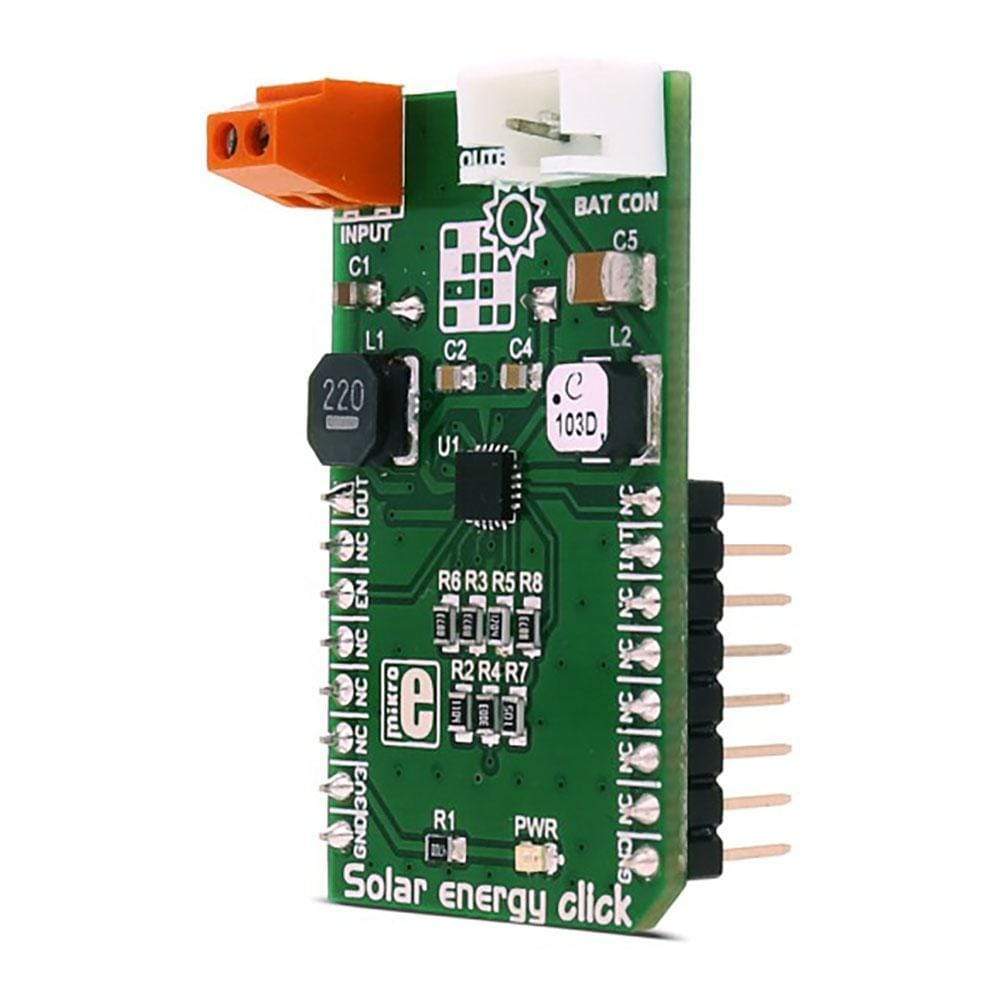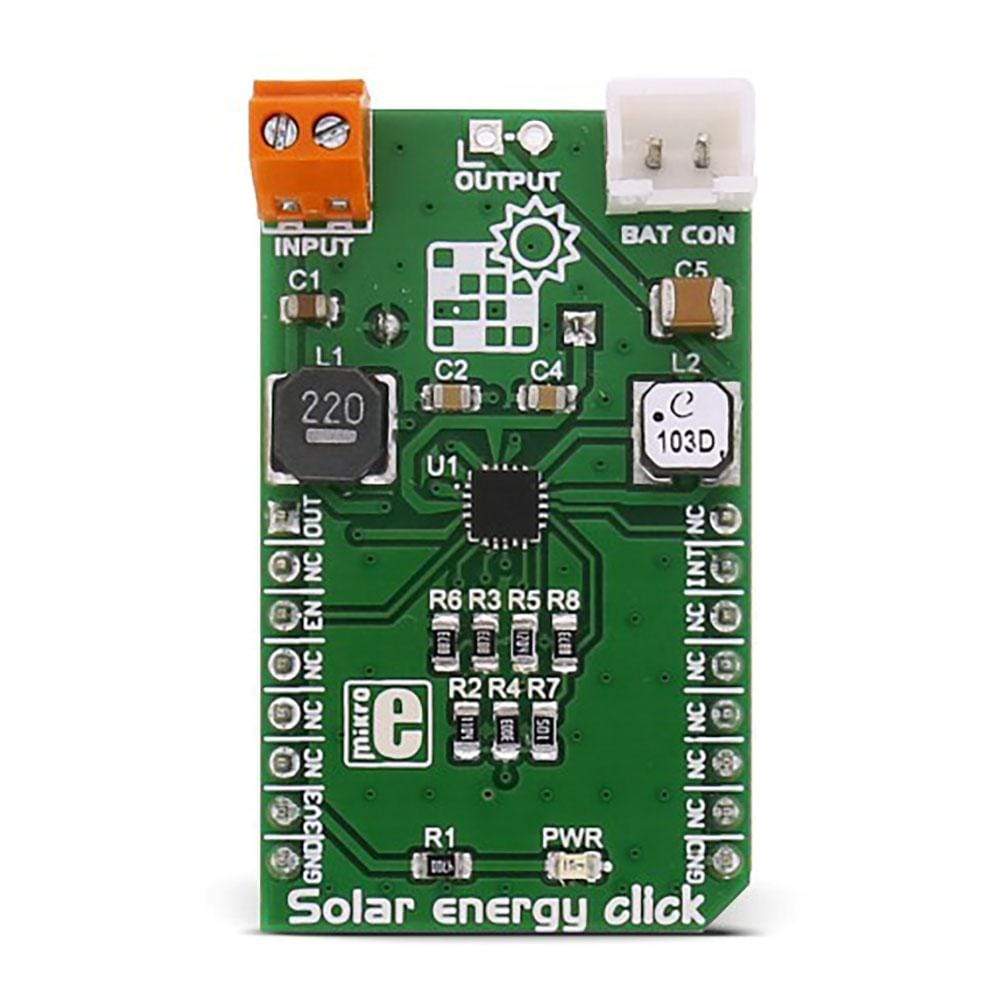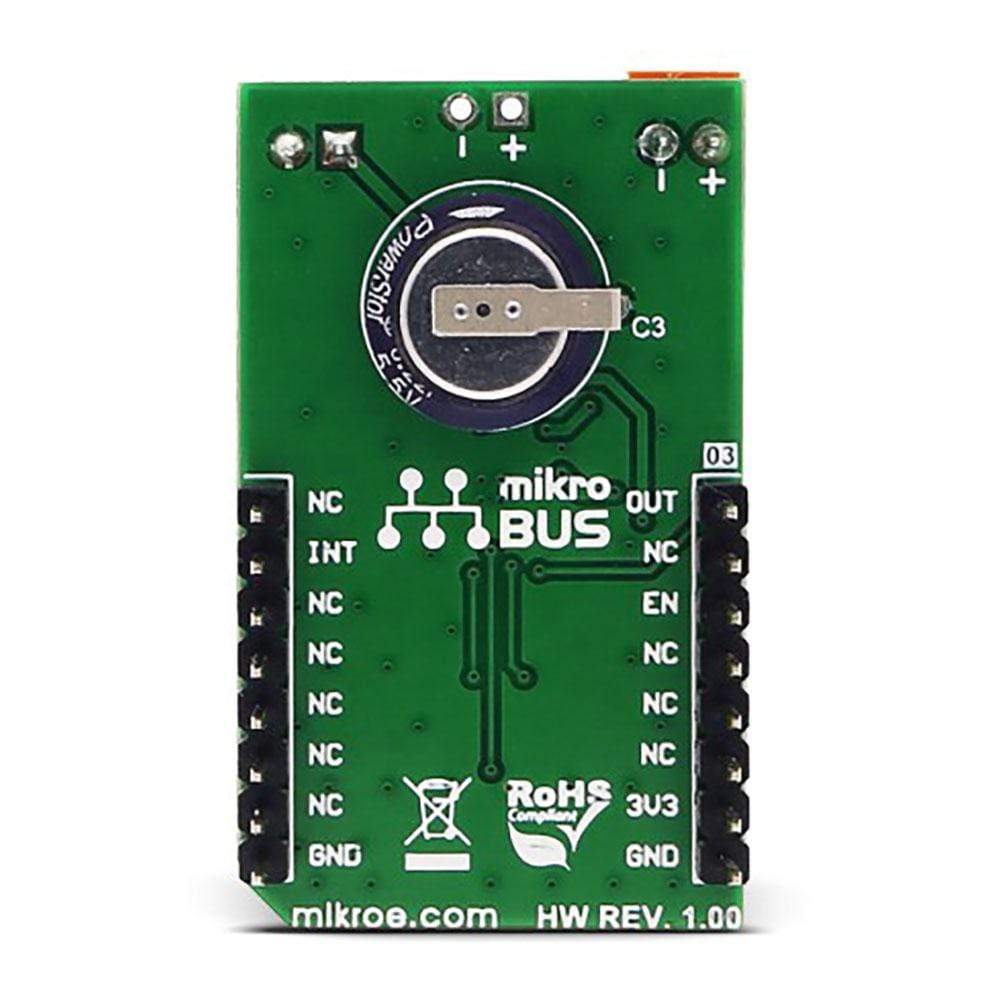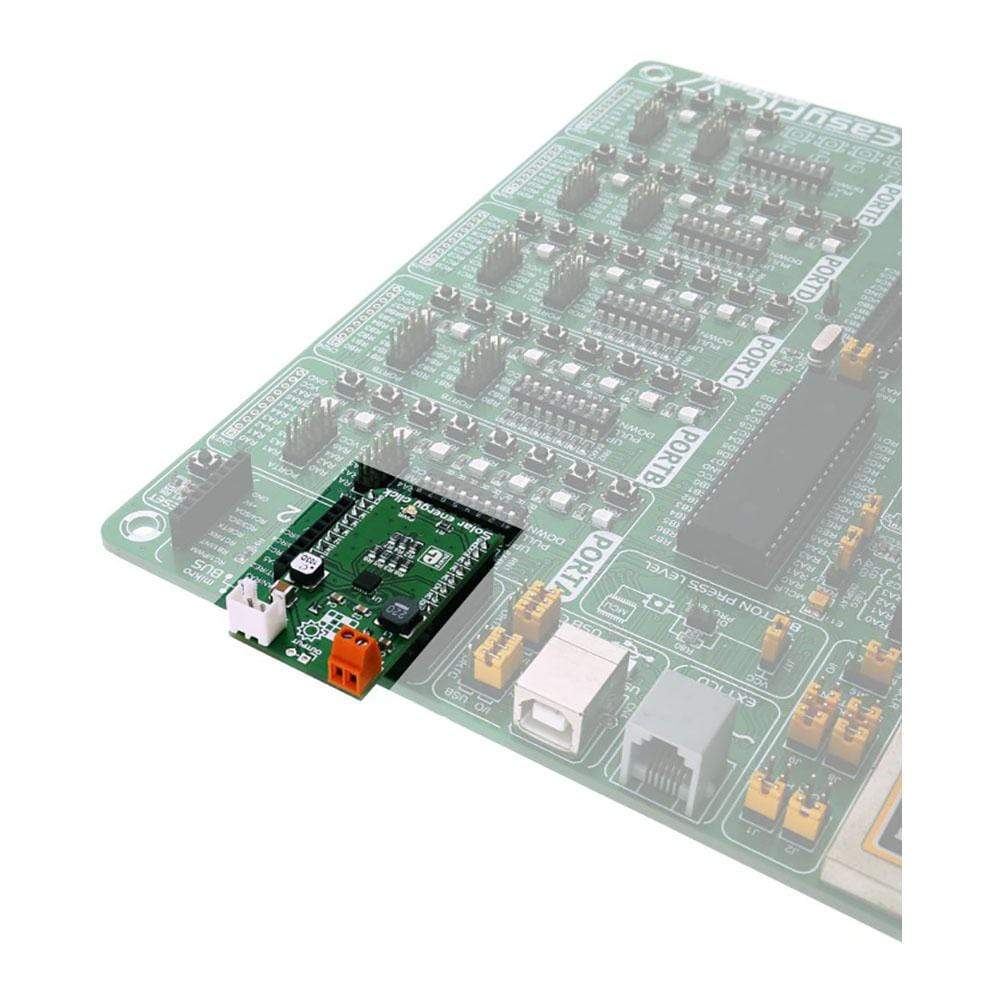



Overview
There are many battery chargers and solar energy harvesters out there already, but the Solar Energy Click Board™ has the unique feature - it encompasses both of these devices in a single package. The Click Board™ uses Texas Instruments BQ25570 - a nano-power high-efficiency boost charger and buck converter device, designed to work with very low power energy harvesting elements, such as the photo-voltaic and thermoelectric generators.
The Solar Energy Click Board™ recharges the connected Li-Po battery or the onboard 220mF super-capacitor, using the photovoltaic element. This is done by utilising the BQ25570's charging and power harvesting capabilities and clever nano-power management features. This Click Board™ can also power up low power consumption devices by using the stored energy, providing a way for continuous power operation of low power devices.
These features make the Solar Energy Click Board™ an ideal solution for powering wireless sensor networks, environmental monitoring devices, portable and wearable health monitoring devices and similar low power self-sustained devices.
Downloads
Il existe déjà de nombreux chargeurs de batterie et récupérateurs d'énergie solaire, mais le Solar Energy Click Board™ a la particularité unique de regrouper ces deux appareils dans un seul boîtier. Le Click Board™ utilise le Texas Instruments BQ25570, un chargeur élévateur et convertisseur abaisseur à haute efficacité à nano-puissance, conçu pour fonctionner avec des éléments de récupération d'énergie à très faible puissance, tels que les générateurs photovoltaïques et thermoélectriques.
Le Click Board™ à énergie solaire recharge la batterie Li-Po connectée ou le supercondensateur 220 mF embarqué, en utilisant l'élément photovoltaïque. Cela se fait en utilisant les capacités de charge et de récupération d'énergie du BQ25570 et les fonctions intelligentes de gestion de l'énergie nano. Ce Click Board™ peut également alimenter des appareils à faible consommation d'énergie en utilisant l'énergie stockée, offrant ainsi un moyen de fonctionnement continu des appareils à faible consommation.
Ces caractéristiques font du Solar Energy Click Board™ une solution idéale pour alimenter les réseaux de capteurs sans fil, les appareils de surveillance de l'environnement, les appareils de surveillance de la santé portables et portables et les appareils autonomes à faible consommation similaires.
| General Information | |
|---|---|
Part Number (SKU) |
MIKROE-2814
|
Manufacturer |
|
| Physical and Mechanical | |
Weight |
0.02 kg
|
| Other | |
Country of Origin |
|
HS Code Customs Tariff code
|
|
EAN |
8606018711864
|
Warranty |
|
Frequently Asked Questions
Have a Question?
Be the first to ask a question about this.





